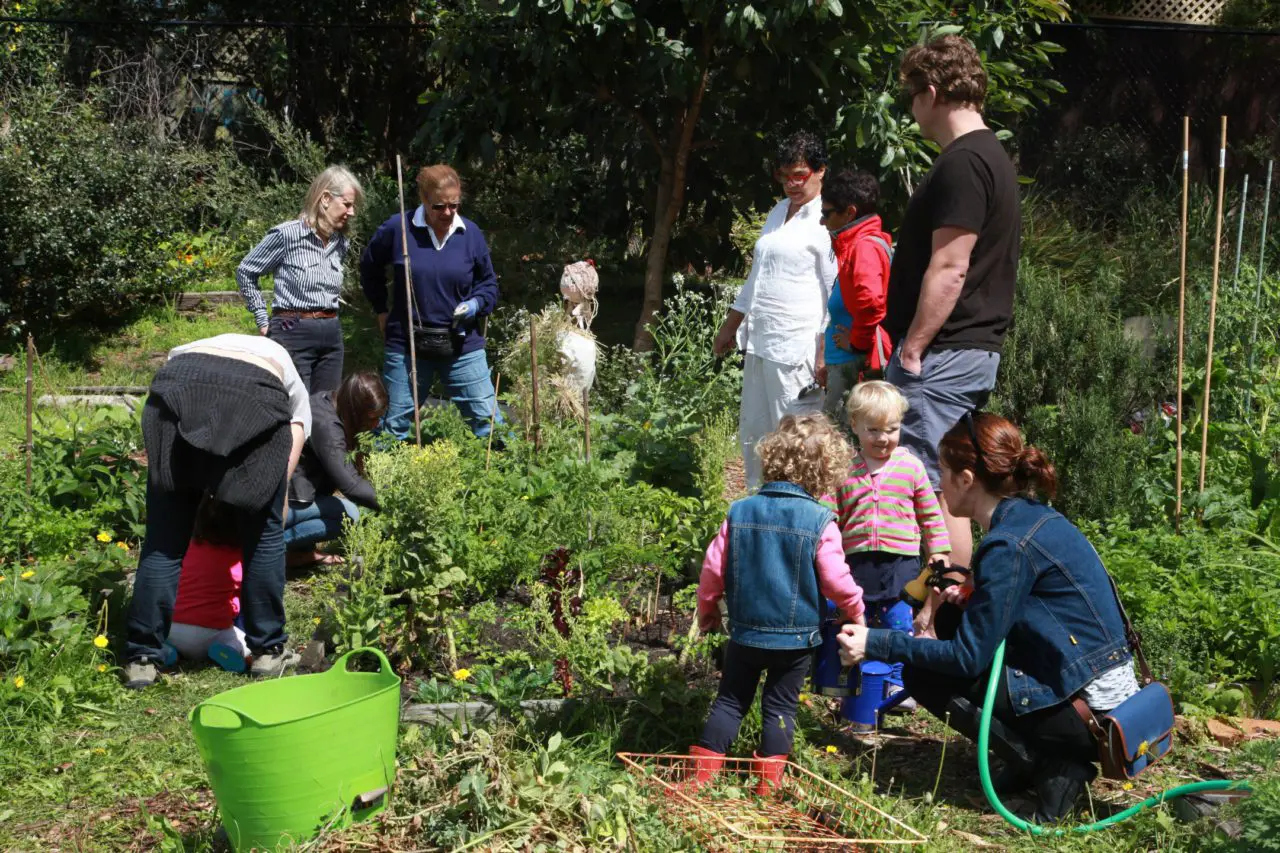There are so many ways a community garden can serve the local economy and its people – from supplying schools and food banks with food, to creating new job opportunities, or even just providing a sociable and relaxing place to go for some exercise, to connect with nature or just for a chat.

If you’re interested in creating a community garden for your local area in Milton Keynes, first check the Planting Up map to make sure there isn’t one to join already. If there isn’t, then the onus is very much on gauging the appetite for having one in your local area with your friends and neighbours to explore how you will carry the project forward together before looking to further support from groups and your town, parish or community council.
This checklist takes you through our recommended steps…

Identify the names of key people in your local community to be involved in your community garden project
Get in contact with leaders of local neighbourhood groups and organisations like the Residents Association, Youth group(s), the Community Centre, Parish Council, Church, School, GP surgery, local business hub, allotment/ gardening club(s) etc. Work with these community leaders to see who can help influence their followers and promote the project further.
Get a general feel for whether local people want a community garden and/or wildlife patch or both. Take an “Anything goes!” approach and discuss inspiring ideas, noting the most popular “uses of our green space” and suggested locations along with the names of the most enthusiastic people to be involved in the project.
Conduct surveys and ask local residents to meetings and events to get a firm idea of what your community wants to achieve and what kind of commitment you have from them.
Identify local people who want to be involved in the project & start meeting with them.
Gather names and get to know your core members – for example, talk about what people want to get from the project, the type of garden they want, motivations for joining, the skills they bring, their desired involvement (incl. long-term commitment), etc as well as which community leaders, groups and organisations will support your project.
It is important that your main project champion (or champions) lead from inside the community to help foster relationships that encourage more local people to join and work together on building something that has been conceived as a local group. Ideally, they also need to be a trusted and respected member of the local community to demonstrate their buy-in to the project and to lead by example.
Identify possible locations for your community garden/wildlife patch on public land & begin making enquiries of land owners.
Scrutinise locations based on their access to water, how much sunlight the area will get, the level of the site, how accessible the site is to local people, who owns the land and how easy it will be to get permission to use it. Some of these factors could “make” or “break” the success of your community green space so it’s important to consider these factors early and rule out problematic locations before you start planning your garden design.
Establish a core team of local residents to take ownership of the community garden project.
Get to know your members and begin thinking about how you want to coordinate the project together and begin planning how you want to design your community garden so that it meets your community’s wants and needs.
Organise your core team into a formal working group & begin planning how to take your community garden project forward.
Coordinate the practicalities of your group, such as:
- roles and responsibilities for managing the project and bringing new people in,
- how you can ensure it will be accessible to all
- establish the overarching aim of the garden (such as food growing, aesthetics, attracting wildlife etc) and the kind of design elements you’ll need to meet that
- who’s responsible for what (eg watering, seed collection, notices, etc),
- access to tools and other necessities for the garden work,
- where and when to meet,
- how to communicate as a group (e.g. Facebook, email, website posts etc.)
- how to involve locals (including schools and businesses),
- what insurance cover you need,
- how you’ll fund it, etc.
Get your working group’s agreement on what outside help is needed from the Planting Up facilitator group & make contact at [email protected]
For example, do you need initial support setting up and planning the garden, help promoting events, information on plants, details for wildlife-friendly things you can do, ideas on sources of funding and/or how to apply, etc?
Get out there! Bring your local community together to muck in & make a start on something to progress your community garden project.
Plant, grow, water, chat, share, eat… Celebrate your garden together, however small the wins.
Keep people involved by doing things like putting on events to share produce and information, creating a newsletter to communicate good news stories, showing off the garden in pictures around your local area etc.
Call in outside support for extra help when you need it.
Can the Planting Up facilitator group help with any educational workshops, training, advice etc?
Learn from experiences, keep planning new things & tell people about your project.
Check back on what you set out to do and what you’re achieving and what’s still to be accomplished. Check with members to keep improving your community garden together.
Add your garden to the Planting Up map – plantingup.co.uk/mk-map
Keep encouraging more volunteers to join you and explore what you can learn and share with other community gardens.

